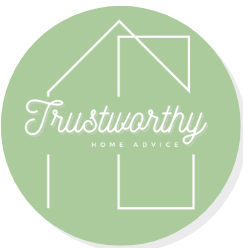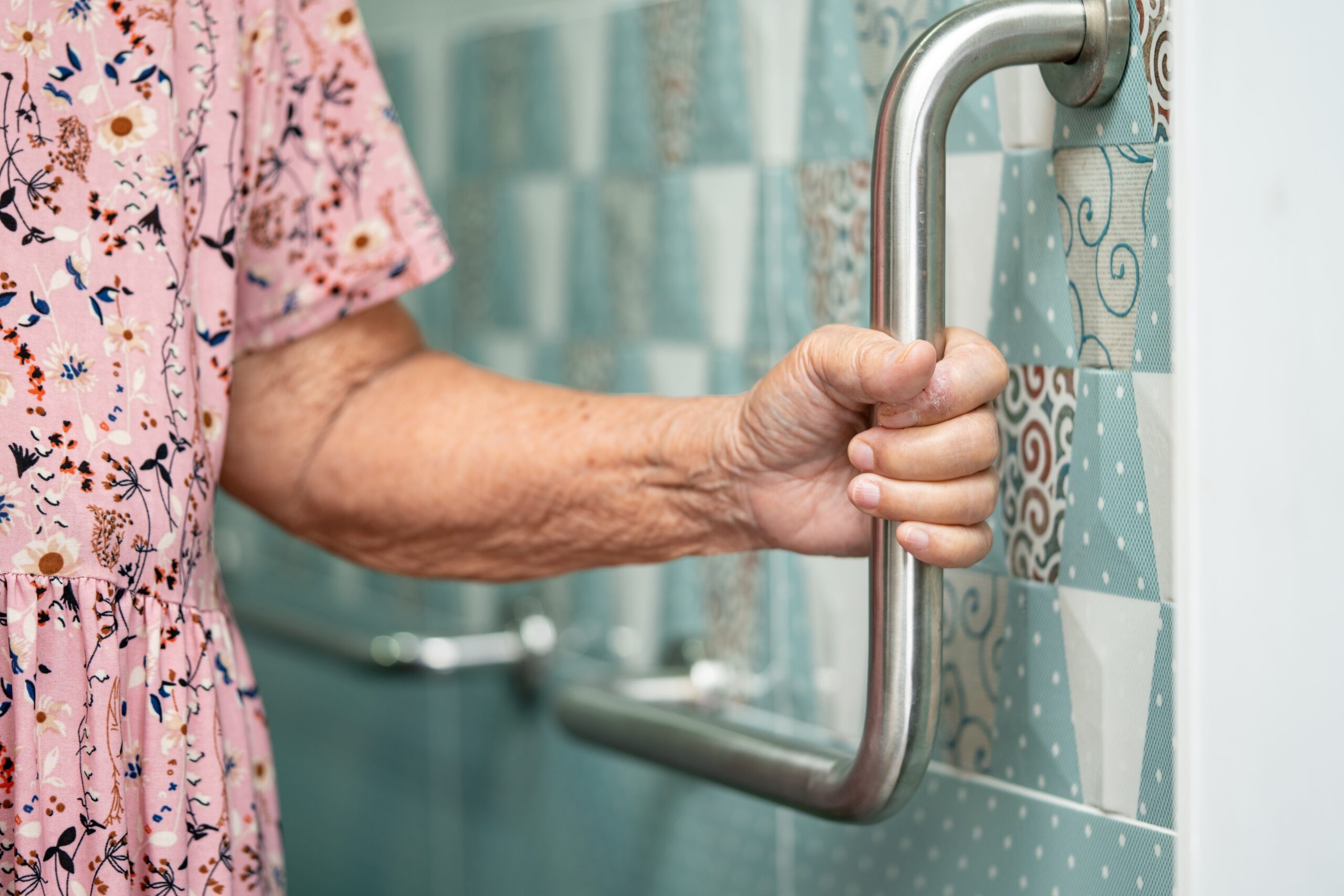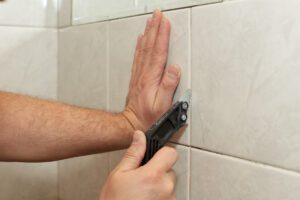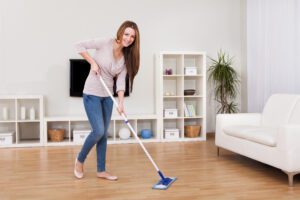Since I’m now in my late 50’s, Home Safety for Elderly becomes more real every day. As our parents, relatives and even our friends age, safety within the home becomes more and more important. The familiar spaces they’ve known for years can suddenly present unforeseen hazards, making it vital for us to adapt their surroundings to their changing needs.
This article explores the various aspects of home safety for the elderly, from simple modifications to more complex solutions. We’ll explore how to make the home environment safer and remain comfortable, ensuring that our elderly loved ones can continue to live independently with confidence.
Join us as we navigate this journey, providing practical, easy-to-implement tips and advice to help you ensure the safety of your elderly loved ones in their own homes. With our guide, we hope you feel empowered to take the necessary steps towards creating a safer living space for the elderly.
Common Home Hazards For The Elderly
We all know Elderly individuals are often more susceptible to accidents in their homes due to various factors, such as reduced mobility, impaired vision, and other age-related conditions. One common hazard is slippery floors, especially in the bathroom or kitchen where water spills are frequent. Installing non-slip mats and ensuring prompt cleanup of spills can significantly reduce this risk.
Another common home hazard for the elderly is poor lighting. Dimly lit areas can make it difficult for seniors to see obstacles or changes in floor level, leading to trips and falls. Therefore, it is crucial to have adequate lighting in all areas of the home, particularly on stairs and in hallways.
Clutter is another hazard that can cause accidents. Excess items on the floor or furniture can easily be tripped over, resulting in falls. Regular decluttering and maintaining a clean, organized living space can help prevent such incidents.
Moreover, the risk of burns or scalds increases with age due to slower reaction times and decreased sensitivity to heat. Hence, it’s essential to have safe kitchen practices, such as using oven mitts and turning pot handles away from the edge of the stove.
Lastly, elderly individuals are more vulnerable to fires due to forgetfulness or difficulty in responding quickly. Install smoke detectors and have a clear, accessible escape plan in case of emergencies.
Remember, a safe home environment is crucial for the wellbeing and independence of elderly individuals. By being aware of these common hazards and taking appropriate precautions, we can significantly improve home safety for the elderly.
How To Prevent Falls At Home?
One of the most effective ways to prevent falls at home is by eliminating tripping hazards. This includes securing loose rugs, clearing clutter, and ensuring that all walkways are well-lit. It’s also critical to install handrails and grab bars in areas such as stairways and bathrooms, which can provide additional support and stability.
Another key aspect of home safety for the elderly is improving physical strength and balance through regular exercise. Encourage your loved ones to stay active as much as possible, this can significantly reduce the risk of falls by improving mobility and coordination.
It’s also important to consider medication management. Certain medications can cause dizziness or drowsiness, increasing the risk of falls. Regular reviews of medication with a healthcare professional can help to minimize this risk.
Wearing non-slip footwear is another simple yet effective strategy to prevent falls. Avoid walking in socks or slippers, as these can increase the risk of slipping.
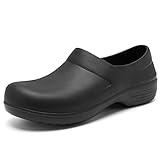
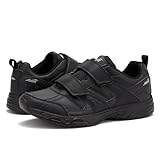
Regular eye check-ups are also important, as poor vision can increase the risk of falls. Ensure eyeglasses are current and clean, and consider adding more lighting in the home to improve visibility.
By implementing these strategies, you can create a safer home environment and significantly reduce the risk of falls. Remember, home safety for the elderly is an ongoing process that requires regular assessment and adjustments.
Are Bathroom Safety Bars Necessary?
The question of whether bathroom safety bars are necessary is a critical one. As seniors age, their mobility and balance can diminish, making the bathroom a potentially hazardous area in the home.
Safety bars, also known as grab bars, provide stability and support in the bathroom, reducing the risk of falls. They can be installed near the toilet, shower, and bathtub, areas where seniors are most likely to slip or lose balance.
- Falls Prevention: According to the Centers for Disease Control and Prevention, falls are the leading cause of injury among older adults, and about 70% of all falls occur in the bathroom. Safety bars can significantly reduce the risk of such accidents.
Moreover, bathroom safety bars offer a sense of independence for the elderly. With these aids, they can navigate the bathroom more confidently, knowing they have something to hold onto if needed.
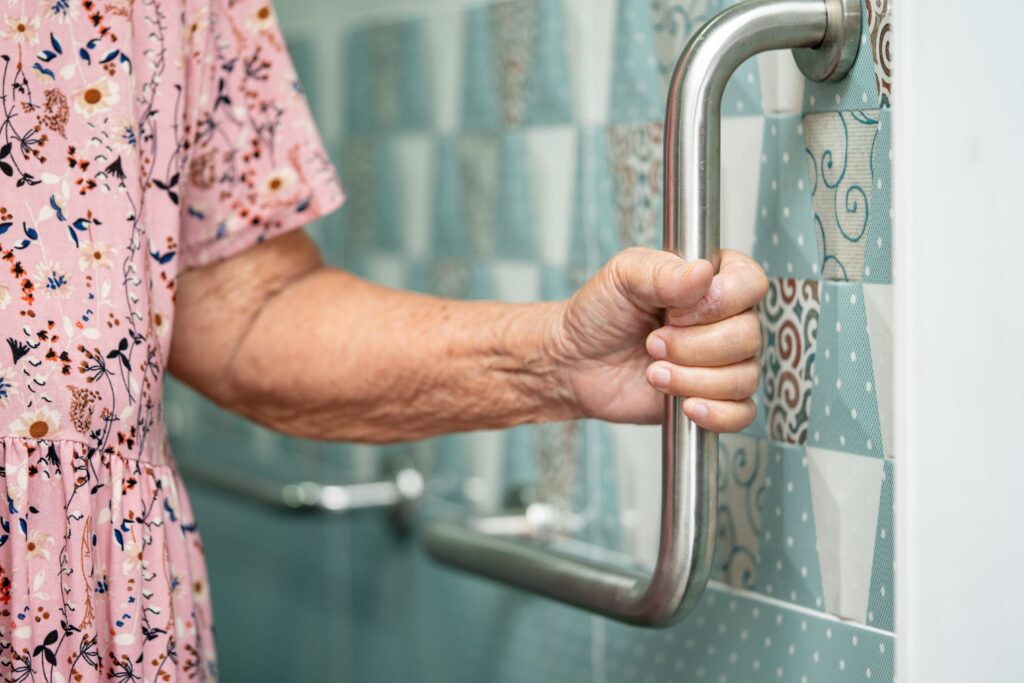
While some might argue that safety bars may not be aesthetically pleasing, the benefits they provide in terms of safety and independence far outweigh any potential drawbacks.
Incorporating bathroom safety bars into the home is a proactive measure that can protect seniors from potential accidents, enhancing their quality of life and promoting their overall well-being.
Remember, when it comes to home safety for the elderly, every precaution matters, and bathroom safety bars are no exception.
What Is A Medical Alert System?
A Medical Alert System is a device that promotes home safety for the elderly by providing immediate access to emergency assistance. Primarily, these systems consist of a wearable help button that communicates wirelessly with a base unit connected to the user’s telephone line. When the button is pressed, the system automatically dials a 24/7 monitoring center, where trained professionals can assess the situation and dispatch emergency services if needed.
One of the main benefits of a Medical Alert System is the sense of security it provides to the user. This peace of mind extends to family members and caregivers, knowing that help is just a button press away, even if they are not physically present.
- Monitored systems: These systems connect the user to a live operator who can speak with them and assess their needs.
- Unmonitored systems: These alert systems dial pre-programmed numbers, typically of family members or friends, when the help button is pressed.
The choice between a monitored or unmonitored system depends largely on the user’s specific needs, living situation, and personal preferences. Regardless of the type, a Medical Alert System is a valuable tool in maintaining the autonomy and safety of elderly individuals living alone.
How To Make Stairs Safer For Elderly?
Making stairs safer for the elderly is a really important aspect of home safety. While the need to modify stairs its certainly dependent on the individual’s condition, at age 85 or older, this is almost a universal necessity. One effective method is installing sturdy handrails on both sides of the staircase instead of just one. Many staircases in homes only have a hand rail on one side.
For example, this is a picture of the main staircase in our home in PA with only one handrail. If needed, we could easily install a 2nd handrail on the wall providing for much more stability.
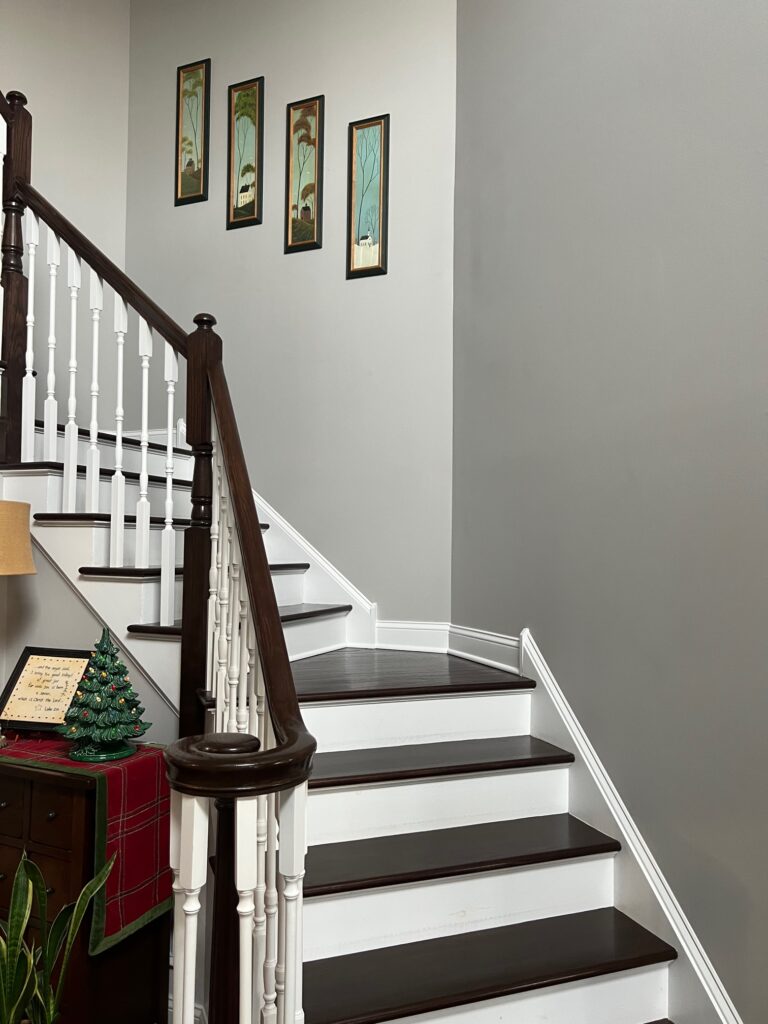
Another important consideration is lighting. Adequate lighting can significantly improve visibility, helping the elderly navigate stairs more safely. Install bright, non-glaring lights at the top and bottom of the staircase, and consider adding light switches at both ends for easy access.
Flooring also plays a vital role in stair safety. Avoid slick materials like polished wood or tile. Instead, opt for non-slip surfaces or stair treads that provide extra traction. Again, referring to our staircase, it’s not ideal for someone with stability issues. If we remain in this home until our “golden years”, we would probably install a carpeted runner for more traction.
Visual aids can also be beneficial. For instance, marking the edges of steps with contrasting colors can help differentiate one step from another, reducing missteps.
- Install sturdy handrails
- Ensure adequate lighting
- Use non-slip flooring
- Mark step edges with contrasting colors
Regular maintenance is also essential. Loose carpeting or broken steps can be hazardous and should be fixed promptly to prevent accidents.
Lastly, consider installing a stair lift if mobility is a significant concern. While this option can be costly, it provides the safest way for the elderly to navigate stairs. We did this for my dad after he had a stroke which significantly effected his balance, he was also in his late 70’s at the time. This gave him about 8 years of independence as climbing stairs was nearly impossible for him.
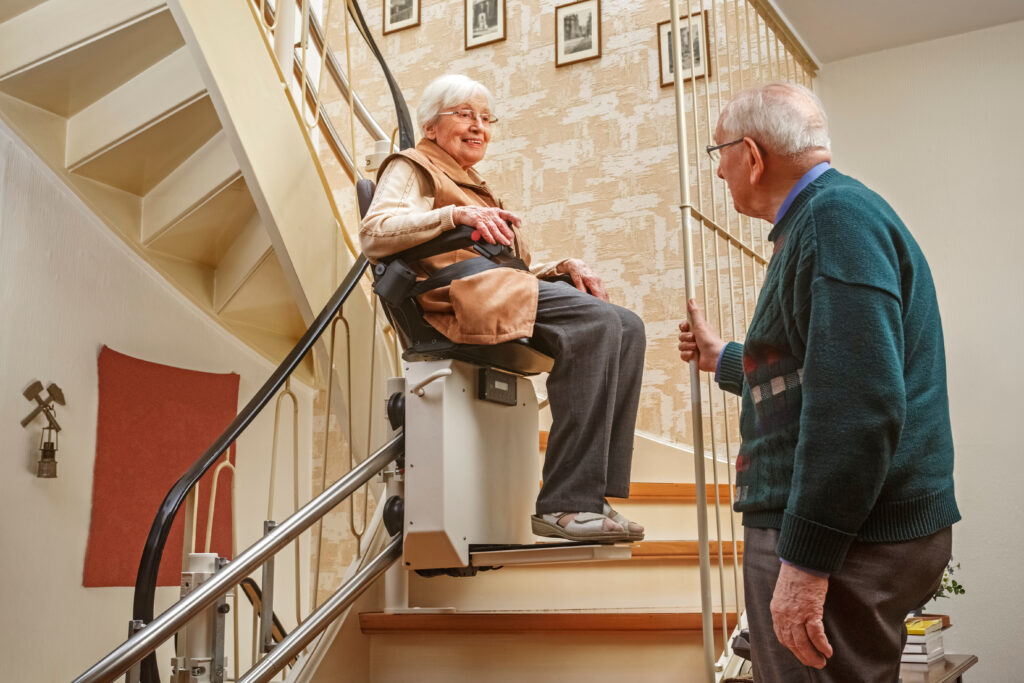
Remember, making stairs safer for the elderly not only reduces the risk of accidents but also promotes independence and improves quality of life.
Why Is Proper Lighting Important?
As we age, our eyes undergo significant changes. The pupils shrink and don’t dilate as rapidly in dark conditions, reducing the amount of light entering the eye. This means seniors need approximately three times more light than they did in their younger years. Additionally, older eyes are more susceptible to glare, and the contrast sensitivity decreases, making it harder to perceive depth and spot potential hazards.
Strategies for Effective Lighting in Elderly Homes
1. Layered Lighting Approach
- Ambient Lighting: This is general lighting that illuminates the whole room. It can be achieved through ceiling fixtures or large lamps. The goal is to ensure even, non-glaring light that fills the space, reducing shadows and dark corners where tripping hazards can hide.
- Task Lighting: This is focused light in areas where specific activities occur, like reading, cooking, or medication management. Desk lamps, under-cabinet lights, and bedside lamps are examples. Task lighting should be bright enough to aid visibility without causing glare.
- Accent Lighting: While primarily aesthetic, accent lighting can also be used to illuminate paths or highlight changes in floor levels, like steps or ramps.
2. Maximizing Natural Light
- Utilize daylight as much as possible as it’s the best quality of light. Keep windows clean and use sheer curtains that allow light in while minimizing harsh direct sunlight.
- Consider skylights or solar tubes in darker areas of the home like hallways or bathrooms.
3. Reducing Glare
- Use matte finishes on walls, floors, and countertops to reduce glare.
- Position lights to avoid direct sightlines and reflections on shiny surfaces.
- Use shades, blinds, or curtains to control natural light and prevent harsh sunlight.
4. Night Lighting
- Install night lights in hallways, bathrooms, and bedrooms. These should be bright enough to guide the way but not so bright as to be blinding when eyes are adjusted to the dark.
- Consider motion-sensor night lights that activate automatically when movement is detected.
5. Lighting for Safety
- Staircases should be well-lit with switches at both ends. Consider strip lighting along the edges of steps for better visibility.
- Ensure that all areas of the home are evenly lit to avoid abrupt transitions from bright to dark areas, which can be disorienting.
6. Color Temperature and Quality
- Opt for bulbs with a warm color temperature for living areas and bedrooms to create a cozy, inviting atmosphere. LED’s offer some great options.
- In task areas like kitchens and bathrooms, cooler, brighter light can improve visibility and contrast.
7. Ease of Use
- Switches should be easily accessible and simple to operate. Rocker switches or touch-sensitive switches can be easier for arthritic hands.
- Consider smart lighting systems that can be controlled remotely or via voice commands.
- Install motion sensors in hallways and stairways
Remember, proper lighting is not just about installing more lights. It’s also about strategically placing them where they are most needed. For instance, placing a lamp by the bedside can prevent accidents when getting up during the night.
While proper lighting significantly enhances home safety for the elderly, it’s important to remember that it’s just one part of a comprehensive approach to ensuring a safe living environment for our aging loved ones.
What Are The Benefits Of Non-Slip Mats?
Non-slip mats are a great additional component of home safety for the elderly. They provide an additional level of security, reducing the risk of slips and falls, which are significant causes of injury among seniors. By creating a stable surface, non-slip mats increase mobility and independence, essential aspects of aging in place.
One of the primary benefits of non-slip mats is their versatility. They can be placed in various areas around the home, such as bathrooms, kitchens, and staircases. These are areas where the floor can become slippery, posing a risk to the elderly.
• Prevention of Injuries: Non-slip mats are designed with a grippy surface to prevent slips and falls. They can significantly reduce the risk of accidents and injuries, providing peace of mind for seniors and their families.
• Increased Confidence: With the added safety of non-slip mats, the elderly can move around their homes with more confidence. This can lead to improved mental health and overall wellbeing.
• Cost-Effective: Compared to other home safety modifications, non-slip mats are relatively inexpensive. They are a cost-effective solution to improve home safety for the elderly.
• Easy Installation: Non-slip mats are easy to install and can be moved around as needed. This flexibility makes them a convenient option for enhancing home safety.
Incorporating non-slip mats into a home safety plan for the elderly is a simple, effective way to enhance mobility, prevent injuries, and promote independence.
How To Ensure Safe Kitchen Practices For The Elderly?
Elderly individuals often spend considerable time in the kitchen, making it vital to prioritize their safety. One key aspect of home safety for the elderly is ensuring a clutter-free kitchen. Clearing countertops, floors, and walkways of unnecessary items reduces the risk of accidental falls and injuries.
Another essential safety measure is the installation of automatic shut-off devices on appliances. This helps to prevent accidents like fires, which can occur if the elderly forget to turn off the stove or oven.
There are many types of automatic shut off devices for home devices. Here’s a list of a few:
- Automatic Stove Turn-Off Devices: These devices can be attached to a stove or cooktop and are designed to turn off the heat after a predetermined amount of time or if no motion is detected in the kitchen for a set period. These will work for either gas or electric stoves.
- Automatic Water Shut-Off Valves: These valves can detect leaks or floods and automatically shut off the water supply to prevent water damage or accidents caused by slippery floors.
- Motion Sensor Lights: These lights turn on automatically when movement is detected and are ideal for hallways, bathrooms, and bedrooms to prevent falls during the night.
- Automatic Shut-Off Outlets: Electrical outlets that automatically turn off power if an appliance is left on for too long or if they detect a power surge, reducing the risk of electrical fires.
- Timed Medication Dispensers: For elderly individuals managing multiple medications, these dispensers can alert them when it’s time to take their medication and automatically lock to prevent double dosing.
- Gas Shut-Off Systems: Similar to stove shut-off devices, these systems can automatically cut off a gas supply if a gas leak is detected or if the stove is left on for too long without activity.
- Overflow Protection Devices: These devices are attached to bathtubs and sinks to prevent water overflow, a common source of home accidents among the elderly.
- Temperature Limiting Controls: For water heaters, these controls can prevent scalding by automatically limiting the maximum water temperature.
- Smoke and Carbon Monoxide Detectors with Automatic Alerts: Advanced detectors not only sound an alarm in the house but can also send alerts to family members or caregivers if there’s a potential danger.
- Emergency Shut-Off Buttons: Large, easily accessible buttons that can be pressed to immediately shut off all power or water in an emergency situation.
Proper lighting is also critical in the kitchen. Bright, well-placed lights can help the elderly see better and avoid mishaps. Consider installing under-cabinet lights and ensuring bulbs are replaced regularly.
- Use non-slip mats: These are especially important in areas prone to spills, such as near the sink or stove. Non-slip mats can prevent falls and other accidents.
Lastly, keep frequently used items within easy reach. High shelves can pose a risk for the elderly as they may lose balance or strain themselves while reaching for items.
Remember, a safe kitchen contributes significantly to home safety for the elderly. Implementing these steps can help create a safer environment, promoting independence and peace of mind for both the elderly and their loved ones.
Prioritizing Home Safety for the Elderly
Ensuring home safety for the elderly is of utmost importance. We’ve discussed the common home hazards for the elderly, highlighting the significance of preventive measures against falls at home. We have also emphasized the necessity of bathroom safety bars, medical alert systems, and making stairs safer for the elderly.
Lighting plays a crucial role in home safety, particularly for the elderly. Proper illumination can prevent accidents and improve visibility. Similarly, non-slip mats offer additional safety, reducing the risk of slips and falls. We have also underscored the importance of safe kitchen practices for the elderly, which can significantly minimize potential hazards.
As we move forward, we anticipate further advancements in home safety equipment and practices that will continue to enhance the safety and comfort of our elderly loved ones at home. It’s our responsibility to stay informed and proactive in implementing these safety measures. Remember, a safe home environment for the elderly not only preserves their physical wellbeing but also promotes their independence and quality of life.
There are so many other aspects to owning a home, please check out our post on Homeownership Essentials: Common Sense Tips all homeowners should know.
